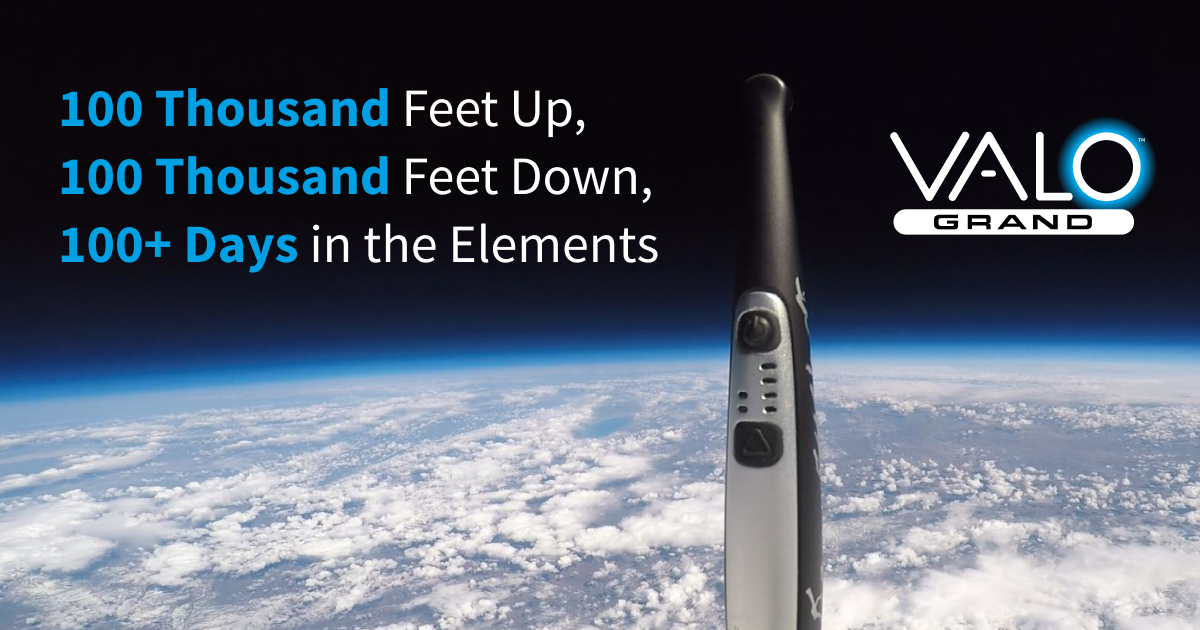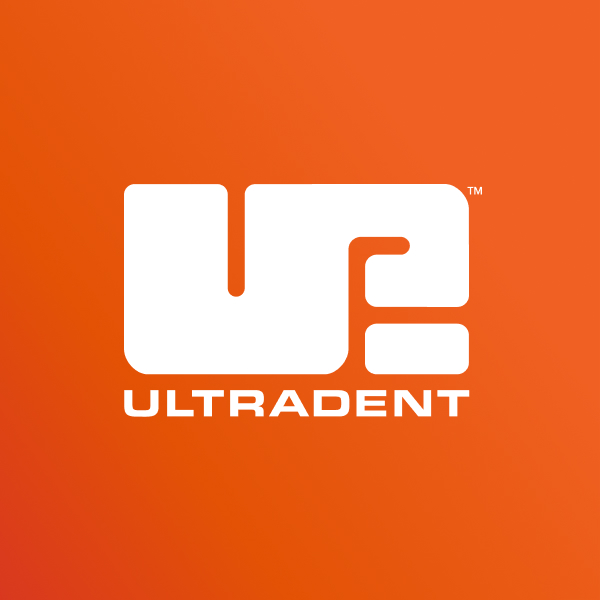Logo and title excluded, the above is a non-doctored image of a VALO Grand curing light as it ascends through Earth's atmosphere.
The True Story of One VALO Curing Light's Journey to Space
There's a deflating helplessness all golfers know, when you take two shots to get the ball on the green, then another two, three, or four shots to reach the bottom of the cup. Those final few feet between tee box and pin routinely humble the most optimistic golfer.
Ultradent teed-off on a celestial par-5 when we launched a VALO Grand dental curing light into space in May of 2019. Our version of the putting green was a mountain covered in loose shale where the VALO Grand light landed. We eventually "sunk the put" by finding the curing light…but we took several attempts to do it.
The Vision to Send a VALO Light to Space
The 10thanniversary for a product like the VALO curing light can't be a simple wine and cheese party. The line has set the bar for curing lights for a decade—we had to set the bar with a celebration. "This is the kind of thing where I didn't ask a lot of permission," jokes Ultradent's Mike Simmons, a cornerstone architect of the VALO Light to Space initiative.
Simmons brought the idea to the table, but he credits the inspiration to a friend. "He had two very sick daughters with a rare immune deficiency. One of their brothers donated his bone marrow to his sister...and they had a hero party for him, where they sent a bobblehead of him to space on a weather balloon and captured it with GoPros."
With this concept in mind, Simmons began formulating a plan to mark the VALO curing light's decade on the market with a true out-of-this-world event. His team eyed May 1, 2019 for liftoff—10 years to the day of the VALO curing light line's debut. They had roughly 90 days of runway to execute the mission and found the process of entering Earth's atmosphere relatively uncomplicated.
They devised a payload that would carry a VALO Grand curing light—along with a bobblehead of Ultradent Founder and CEO Dr. Dan Fischer—to 100 thousand feet of altitude, while also filming every angle of the flight and fall.
The cargo consisted of a Styrofoam box, four GoPro cameras, the VALO Grand curing light, and the Dr. Fischer bobblehead–all carried into space by a standard weather balloon purchased on Amazon.
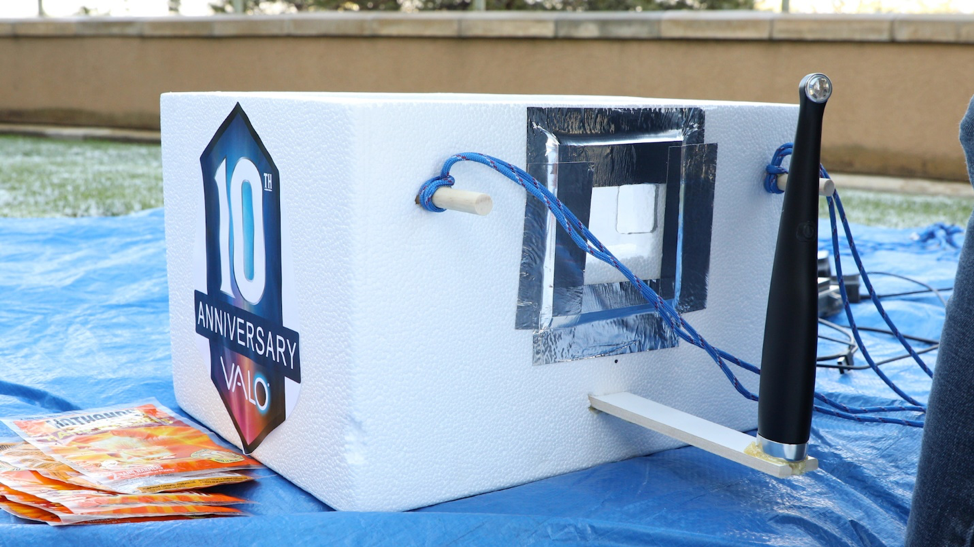
The VALO Light to Space payload box, prior to launch
The heftiest complication came from the fuel needed to power the 100k foot journey. "We're in a national helium shortage," says Simmons. Just finding a vendor who would sell helium became a difficult endeavor, but a supply was eventually secured. "We may have overpaid for that," he chuckles.
Helium in tow, Simmons' team narrowed their focus on the May 1, 2019 sendoff.
"The amount of preparation just for [launch day] was pretty crazy. I don't think either of us were breathing," jokes Oliver Brown, Ultradent's Brand Manager for the VALO curing light line. "People were saying 'what's gonna happen? What are you gonna do with this thing?' And I'm like, 'we're just...gonna...launch it,'" he adds with a shrug and a smile.
Countdown
Marketers don't tend to moonlight as physicists, but Simmons, Brown, and others involved in the launch ran countless simulations to predict the balloon's flight path and eventual landing spot for the payload. Fortunately for the "mathematically limited" folks of the world, there are websites that do the heavy lifting on these calculations and limit the potential for human error.
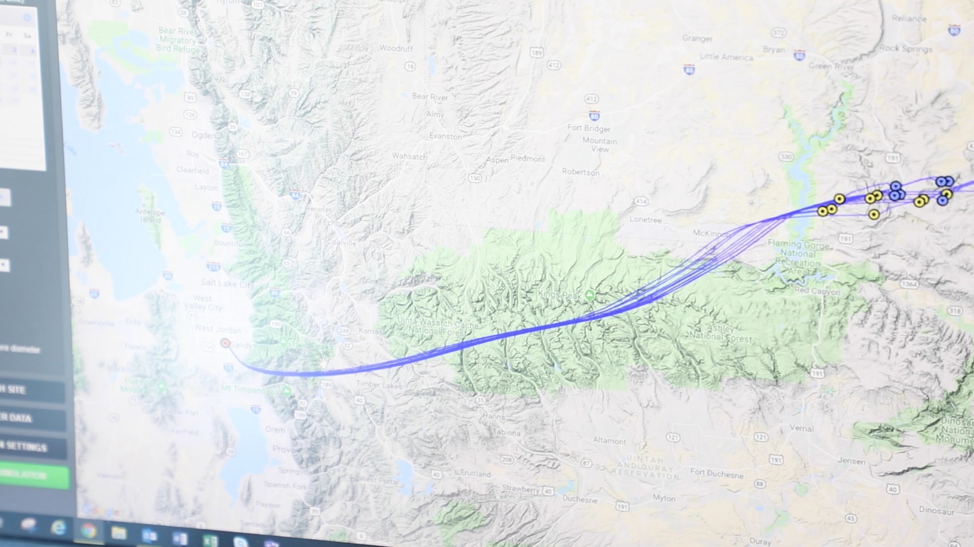
The predicted flight path for the payload
"We felt like we had a pretty good idea where it would come down," says Simmons. "All of the predictions we ran [. . .] told us we were going to pick it up at Flaming Gorge Reservoir, up over the Uinta [mountain range] and down around Flaming Gorge."
When May 1 rolled around, weather was a large concern and the unpredictability of spring in Utah loomed over liftoff. Atmospheric conditions were favorable for the liftoff, despite frost on the ground the morning of the launch.
Dr. Fischer emblazoned his signature across the VALO Grand dental curing light and the team attached it to the outside of the cargo box opposite the bobblehead, both in frame of their own GoPro. Handwarmers were added to the payload to battle frigid atmospheric temperatures that could derail video efforts.
Ultradent's front lawn was converted to a launchpad and employees made up the peanut gallery. Dozens came out to watch the liftoff, accompanied by their own festive balloons to release alongside the main payload.
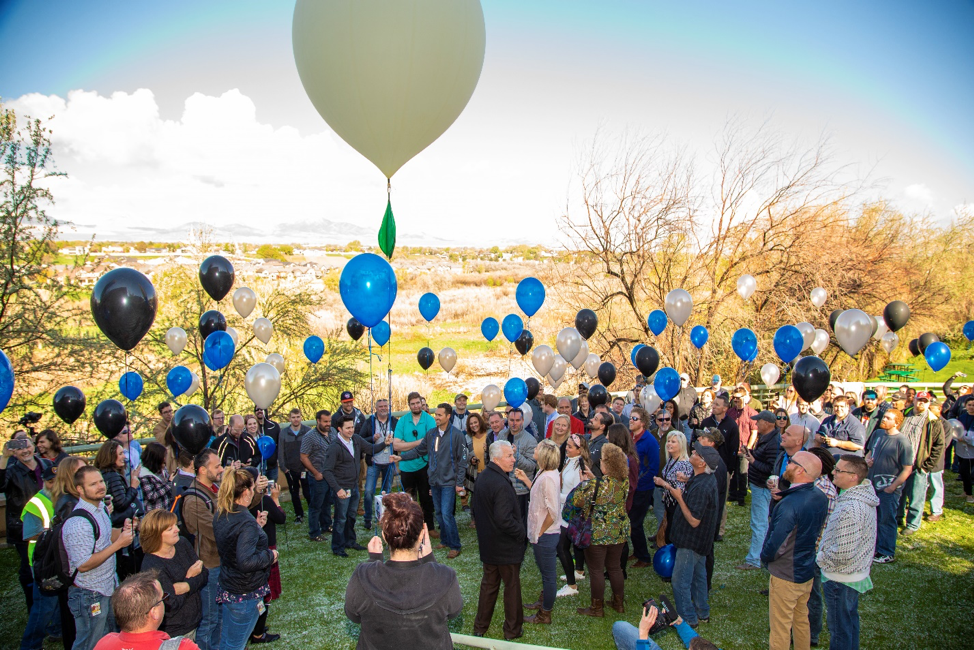
Moments prior to liftoff on Ultradent's lawn
Following a "10, 9, 8, 7…" countdown necessary for all space travel, the balloons were released, with the weather balloon and its cargo quickly ascending beyond its party-favor brethren.
"We were on cloud nine as soon as we saw it go up into the sky," says Brown. "Now we know how NASA feels," adds a smirking Simmons.

Successful launch
Up, Up and Away
As the VALO Grand curing light climbed and slipped from view Simmons, Brown, and crew piled into a vehicle to trail the balloon. "We had the perfect day planned. We had this van, we had the video crew with us. We were going to follow the pings on our phones and laptops," Simmons says.
"When we got in the minivan to start driving there, we were so excited, thrilled, anxious, just to get to Wyoming," Brown adds.
The GPS pings were in line with the predicted flight path, and the team followed the digital footprints.
"It was following the trajectory of the prediction calculator exactly. We were like, 'ok this might be too good to be true,'" says Simmons. "Then we lost it."
The halt of pings didn't alarm the team – they anticipated losing communication with the payload when it reached 40–50 thousand feet of elevation. They expected to pick up the pings again once the balloon popped and the cargo descended back toward Earth.
The crew pulled into a roadside diner and bunkered down, eating lunch to anxiously pass the time waiting for the next GPS ping.
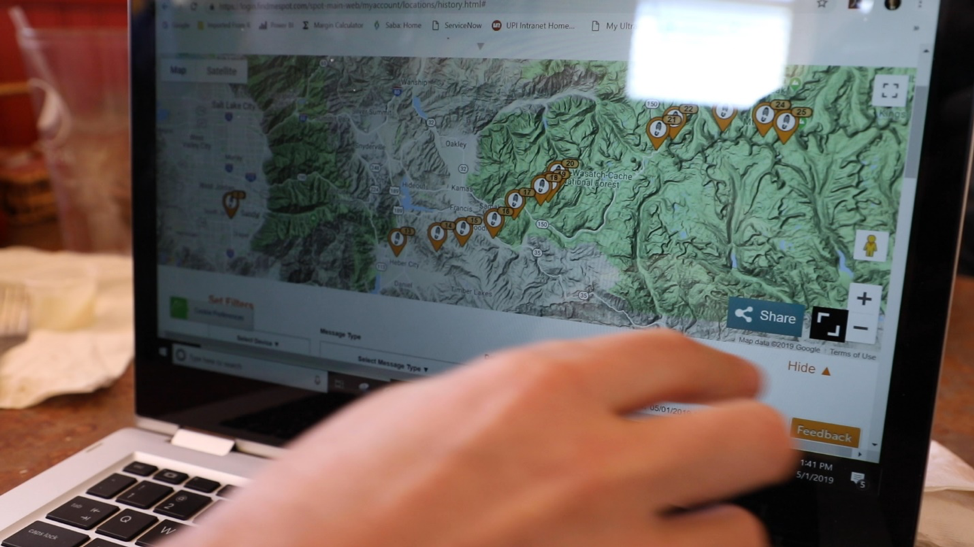
Waiting for the GPS pings to start again
"We had lunch with our laptops open, thinking 'OK anytime now,'" Simmons recounts. "A couple hours later we're just sitting there, and there's nothing. We knew the total flight time would be somewhere between 2.5 and 3.5 hours. And we gave it...probably 4.5 hours, maybe 5 hours...just waiting, waiting, waiting. We ordered dessert, and still, nothing. We kinda just licked our wounds and went back to Ultradent."

Simmons ponders as he awaits a GPS ping
"There was a totally different feel in the van on the way back. Everybody was quiet, nobody was really talking. People were making occasional jokes, trying to cheer each other up...but we were all just like 'ohhh nooo,'" says Brown. "Just a real quiet ride back. I think we stopped to film a train. Like, 'Oh that will make up for it, look at this train we saw.'"
Waiting is the Hardest Part
The next ping came in the middle of the night, nearly 12 hours after the team returned to Ultradent HQ. "About 8:30 the next morning I logged on and saw we got pings starting about 2 in the morning. But they were veryremote, and we wondered if it was right. The prediction calculator said it was supposed to be by Flaming Gorge and this was in the middle of the Uintas," Simmons exclaims.
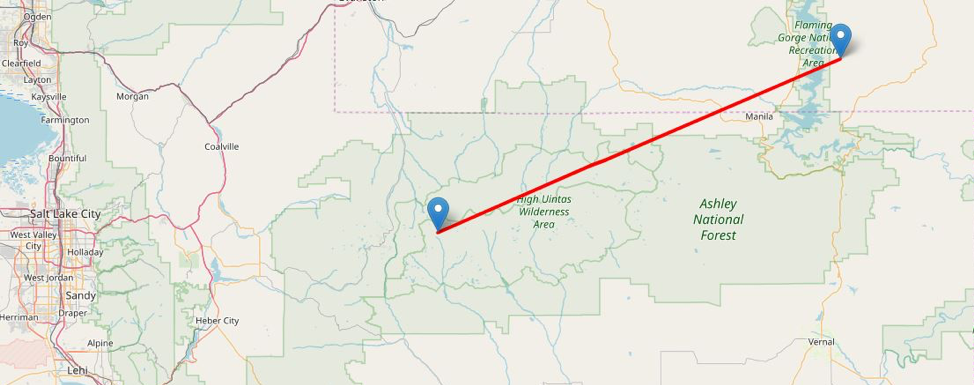
The point on the left marks where the payload landed, roughly 70 miles from the anticipated landing spot of Flaming Gorge Reservoir.
The prognosis for recovery was far from ideal—the payload landed deep in the mountains, not far from the second highest peak in Utah. "The forest service told us it's not accessible by car, it's 10–12 miles in from the trailhead and they were sitting around 90 inches of snow at the time," says Simmons. "We were like, OK, we need snowmobiles, snowshoes, cross country skis [. . .] we're going to get this thing."
"We knew we were going to go get it, go rescue it. We were making jokes like 'no VALO light left behind!' but that's when we realized there might be a real safety risk of getting stuck in the Uintas," Brown says.
Reconnaissance missions got underway while the team waited for the snow to melt, turning Brown into Ultradent's own Indiana Jones. "I would drive out to the trailhead, which is 15–18 miles on a dusty road, after a three-hour drive from Ultradent, and from the trailhead it was still 10 or so miles of hiking to where the payload landed. One Saturday I woke up early [. . .] figured I'd be fine because I had a Jeep Grand Cherokee," Brown says with a sarcastic grin. "I drove two miles on the dirt road and got stuck. I had to get pulled out by some mountain-dwelling locals. That was embarrassing. Then I got stuck again driving down the mountain and had to get pulled out...again."
Ultradent videographer David Landeen succeeded where Brown's recon efforts fell short. He was able to get fairly close to the landing zone and returned with a realistic perspective on what a retrieval mission would entail. "He came back and said, 'it's at least a two-day trip,'" Simmons says.
Into the Wild
Back at Ultradent, the team regrouped and picked August 8, 2019 to set out and recover the payload.
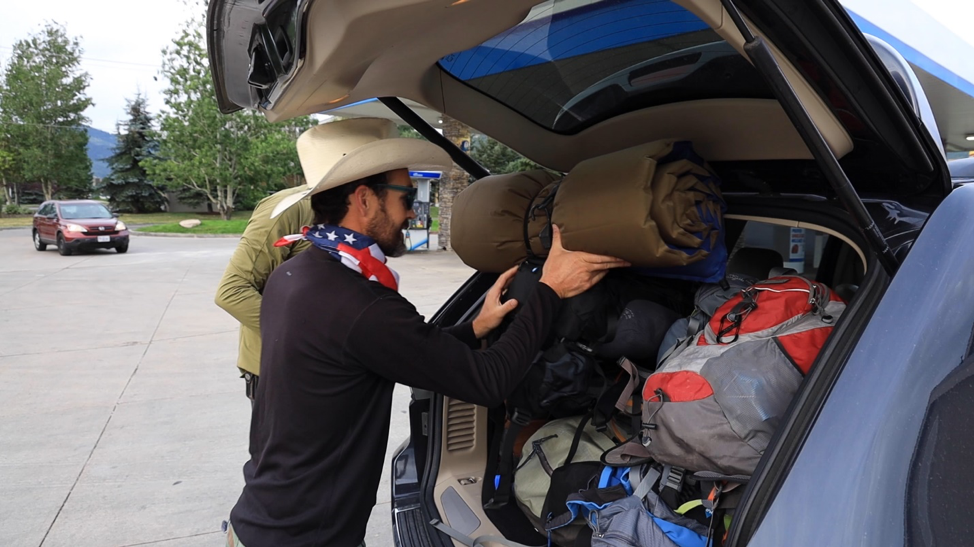
Ultradent's Mike Simmons packs cargo for the (first) overnight trip into the Uinta mountains.
Horses were enlisted to help the would-be mountaineers trek through the wilderness. The venture into the backcountry began exactly 99 days after the launch.
It was a rainy morning and they arrived at the trailhead to find a waterlogged path. After a few soggy hours of riding, the team made it to their picturesque day-one destination. "We spent the night at a place called Dead Horse Lake in the middle of the Uintas. Beautiful scenery," says Simmons.
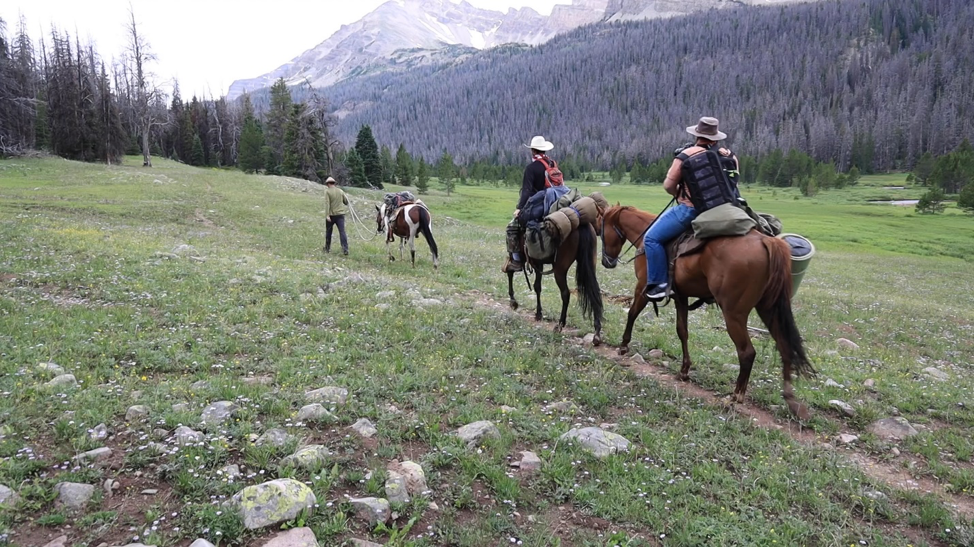
Simmons, Brown, and Ultradent's Martin Webb trek to Dead Horse Lake on horseback.
Tired, soaked, and sore, the crew set up their camp for the night. "Oliver bought a whole new hammock and chains, actual chains to hang it up, and a brand-new sleeping bag. But his sleeping bag didn't get packed, so he was up there without one," adds Simmons. "We had to find Oliver 'accommodations' so we flipped the horses' wool pads upside down in his hammock."
"The wool pads from horses that had just ridden in the rain for 10 miles," Brown quickly interjects. "They smelled like butt."
At sunrise the team awoke and launched a drone in hopes of spotting the payload box from above, but alas, no visual—for that, more hiking was in order. "I thought at that elevation (roughly 12k feet) it would be all barren with just rocks," says Brown. "But it was like the Sound of Music set up there. Beautiful."
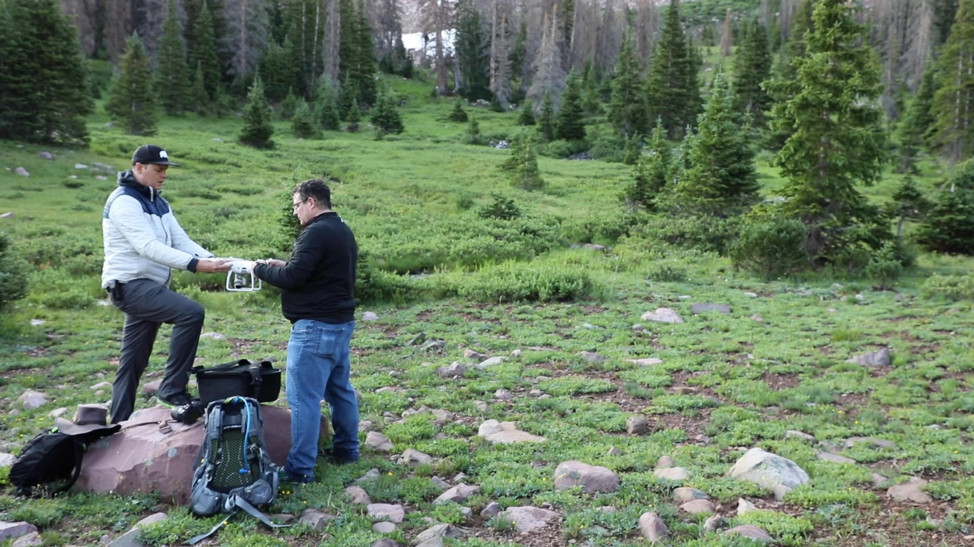
Brown and Webb prep the drone to fly over the landing zone.
The team searched and searched until a whistle pierced the stillness of the mountain air. "Mike got visual of the payload box and blew the whistle. And we started screaming, we ran over and it's in the middle of a hill of loose shale," Brown says.
The team scampered to the payload, sliding around on the shale as they tried to stay upright, relieved and rejuvenated from finding the box.
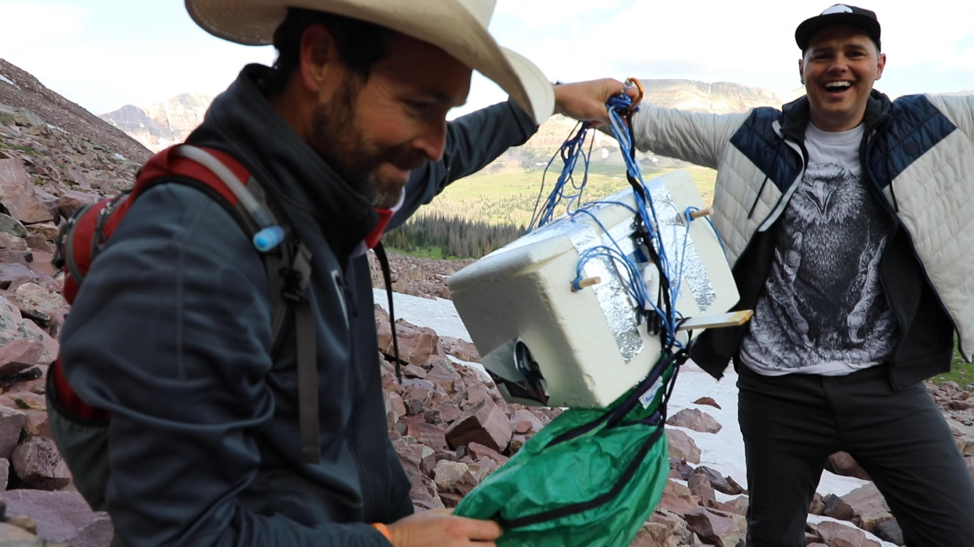
Simmons and Brown secure the payload.
The jubilee was short lived, as they soon realized the VALO Grand curing light was no longer attached to the payload...nor was it anywhere in the vicinity. "We knew we had to head out of this area by noon, to get off the trail by dark, so we can get home without our families calling search and rescue," says Simmons. "Noon comes, and we didn't find the VALO light...we got completely dogged."
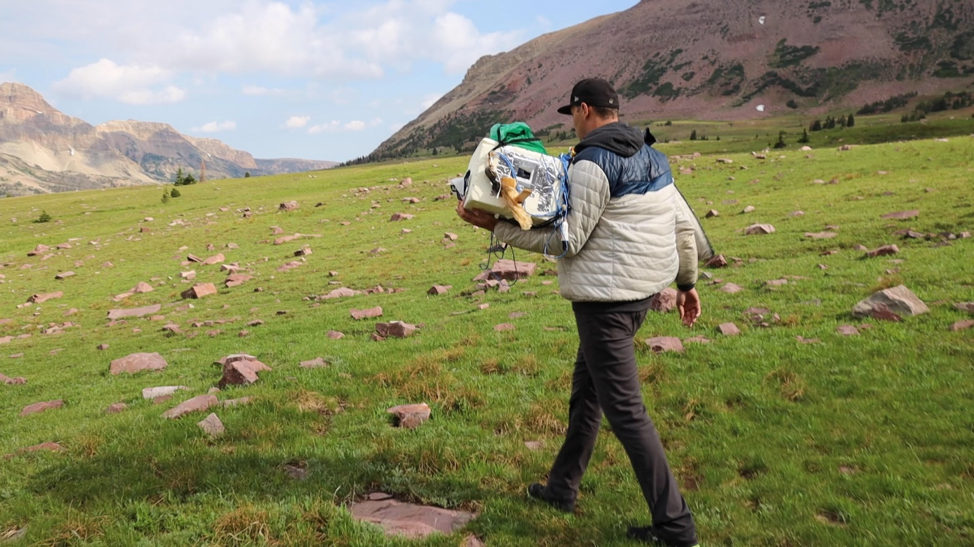
Brown and the payload box
After a few hours of searching, the team resigned to leaving without the curing light, but their spirits were nonetheless boosted from finding the payload. "We were all beat at the end of that day...but when we started charging the GoPros in the car and started seeing the footage, it was really exciting," says Brown.

Recovered GoPro footage showing the moment the weather balloon popped, sending the payload tumbling toward Earth.
Video evidence in tow, the team returned—without the VALO light for the second time—to Ultradent HQ.
CSI – Crash Site Investigation
The video investigation got underway immediately, with all five camera angles providing clues to the potential whereabouts of the missing VALO Grand curing light. The footage became Ultradent's version of the Zapruder film.

The team analyzing footage of the VALO Grand curing light detaching from the payload.
"We started to dig into the videos, seeing the footage, and started determining that where the VALO light went down was not the final resting place of the payload box," says Simmons. "We put everything in slow motion, all angles from the cameras, sleuthing around. We saw the VALO light detach right when the payload touched down."
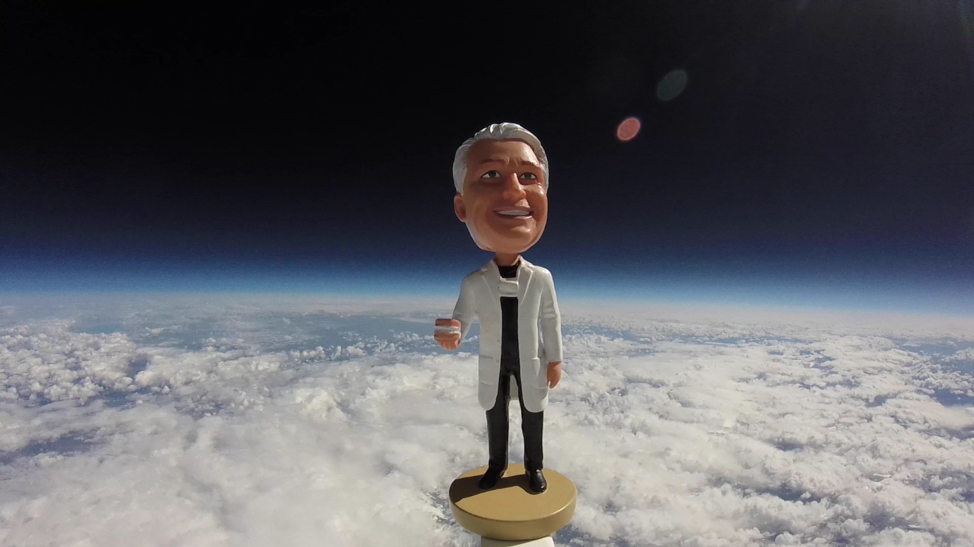
The Dr. Fischer bobblehead, floating tens-of-thousands of feet above Earth's surface.
Frame by frame, the footage was examined and the team developed theories for where the VALO curing light came to rest. They didn't know exactly where it was, but they knew they needed to go back to the landing zone to find it. "There was basically a 75-yard section of steep embankment, a 200-foot cliff, and 300–400 yards of very steep shale that we needed to search," Simmons says.
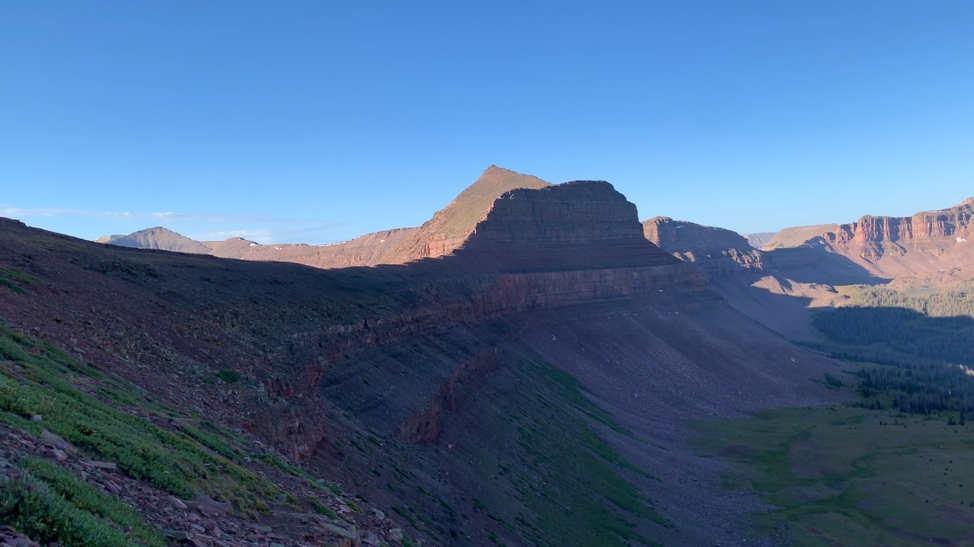
The daunting hill of shale
"No VALO light left behind," right?
Return to the Wild
Powered by dedication and persistence (and a desire to spend additional days in the woods instead of the office) the search party–now including Ultradent's Katie Loyola–returned to the trailhead once more and began their journey toward Dead Horse Lake and the landing zone for the payload. They reached the campsite and bedded down to prepare for another day of scouring the shale-covered slopes. Brown even managed to pack a sleeping bag this time.
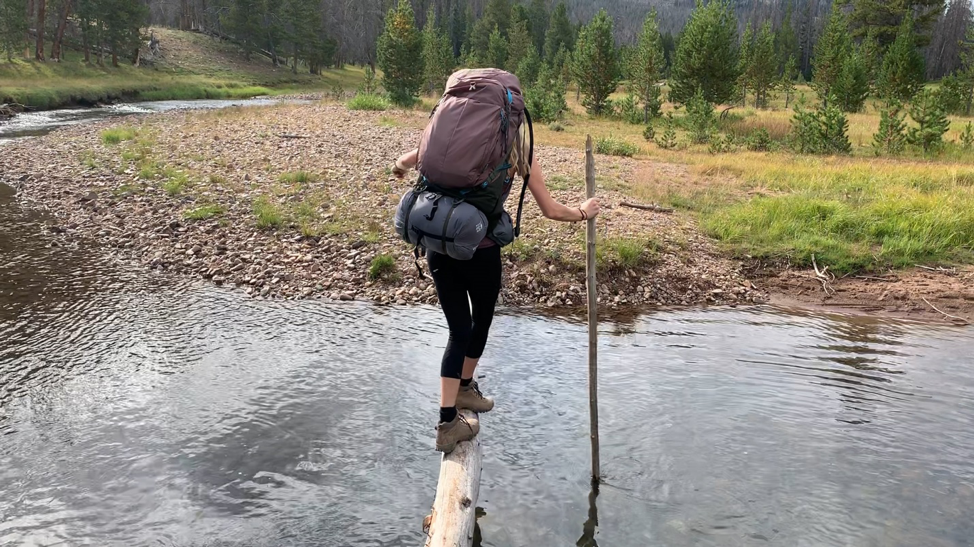
Ultradent's Katie Loyola balances on a downed log to cross a creek.
"I had a metal detector, and we were really concerned that we were going to have to scan all this shale with it," Brown says.
Search number two got underway at sunrise, with the team determined to track down the missing VALO curing light more than 17 weeks after it was launched.
"When I saw photos of it I didn't realize how large it is," says Loyola of the landing zone. "You see these boulders on the top of the mountain and think 'they aren't so big' then you get up to them and they're the size of a school bus."
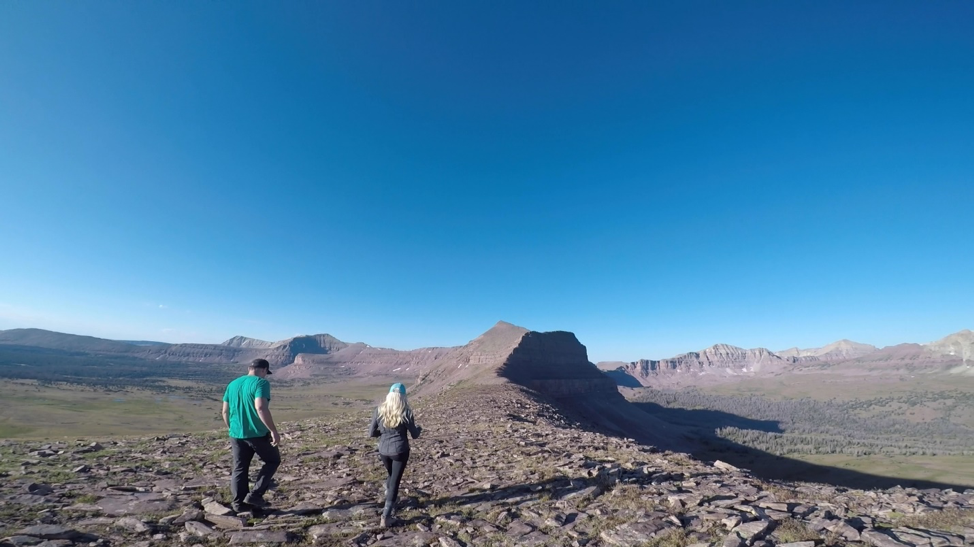
Brown and Loyola hunt for the VALO Grand light on a mountain of loose shale.
The hunt was physically taxing but it soon provided hope—they found batteries that had been inside the payload box, but still no VALO curing light. "We also found a bell from a goat that's probably long since been dead. A relic, it'll be in the Smithsonian later," Brown recalls, smiling.
After several hours of searching with only batteries and a goat's bell to show for their efforts, the team threw in the towel for the day without securing the VALO Grand curing light. They returned to camp to spend another night at Dead Horse Lake with one final day of searching ahead of them.
Spotting the VALO Curing Light
The next morning it was déjà vu at 12k feet as the crew hiked to the landing zone for the third time.
When the batteries were found, the team had been searching the lower "bowl" section of the landing zone. Now they had to canvas the upper rim and slope. "When you're down in the lower part of the valley and you're looking at the upper shelf, you don't realize how steep it is," Simmons says, eyes wide.
"The enormity of it was so weird. When you'd look at it, you'd get this vertigo type feeling like from a Hitchcock movie," says Brown.
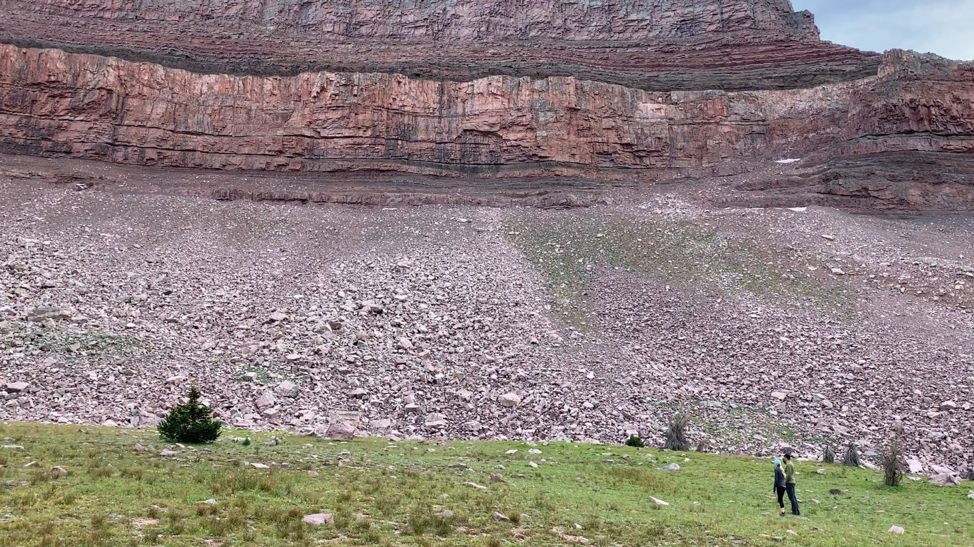
A needle in a haystack may have been simpler to track down than a VALO Grand curing light on a mountainside of shale.
"It was so steep, we were thinking, 'can you even walk on that? Should we have brought rope to harness in?' It took 40 minutes just to hike to the top," Simmons sighs. "We went to the very end of the cliff face and started to zig zag back and forth...and...it was...horrible."
Fortunately for the crew, they soon caught their biggest break yet.
"Probably 15 minutes after we hiked up, I look down and 20–25 feet away from me, I see this metallic signature. I don't see the VALO light, I see Dan Fischer's signature," Simmons says with a visible glow. He enthusiastically blew his whistle and the crew scampered over to his location.
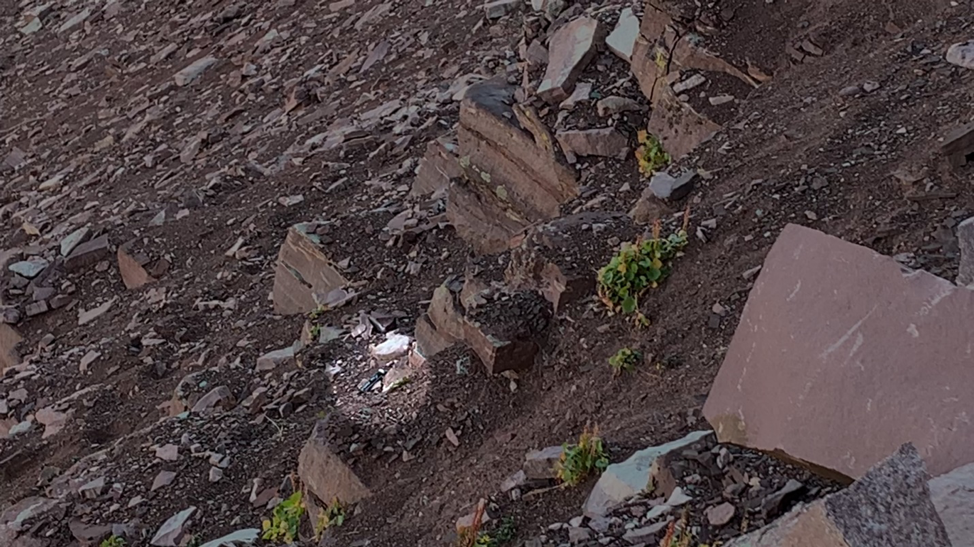
The VALO Grand curing light, resting where it was spotted by Simmons.
Brown grabbed the VALO Grand curing light and as soon as he put batteries in, it gave off a BEEP, signaling it still worked. That seemingly innocuous BEEP cascaded unfiltered elation over the search crew as pride in the curing light's durability flooded through them.
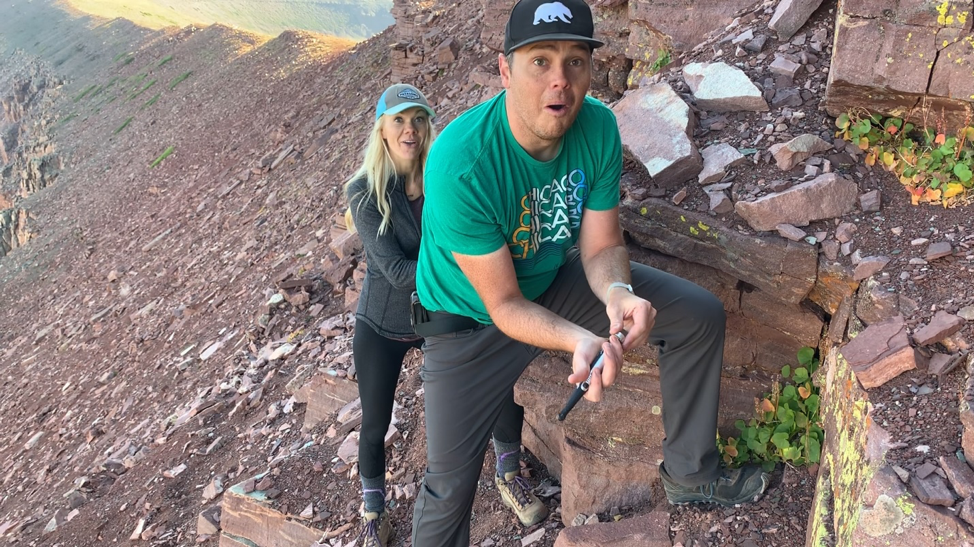
Brown and Loyola hear the VALO Grand curing light's BEEP.
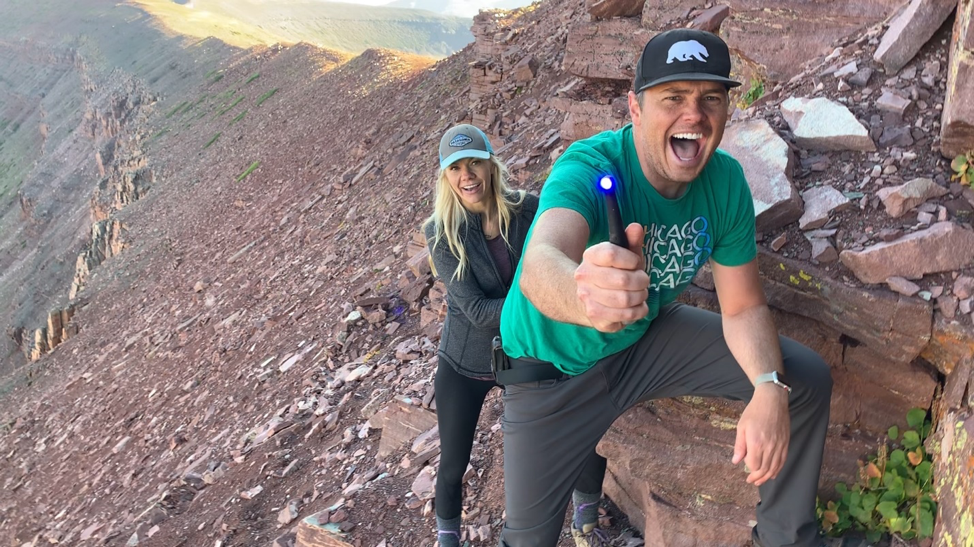
The LED of the VALO curing light firing up after a trip to space and 126 days in the elements.
"I was yelling so loud, somebody else came over from a different mountain range thinking I was hurt. Full throated bellows," Brown recounts, visibly relieved by the successful mission.
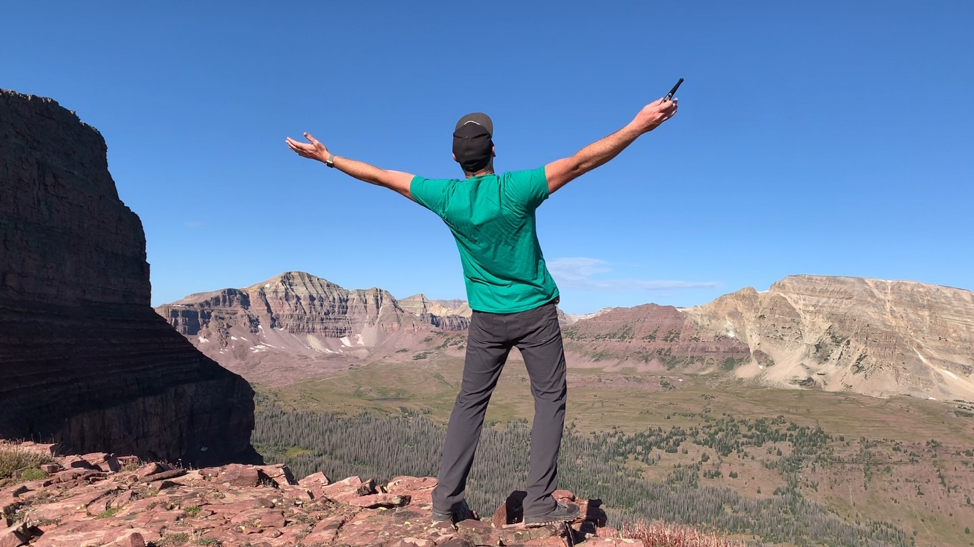
Legend says Brown's shrieks still echo in the valley below.
With the slog now finished, a victorious search team retreated from the landing zone for the final time, to proudly return the fully functional VALO Grand curing light to Ultradent HQ 126 days after it left.

The VALO Grand dental curing light overlooking the valley.
Don't have a VALO Grand dental curing light yet? Click on the button below to get one today!


